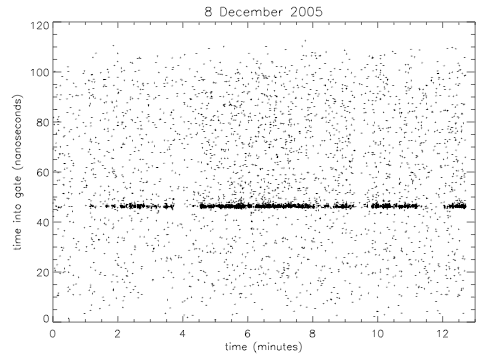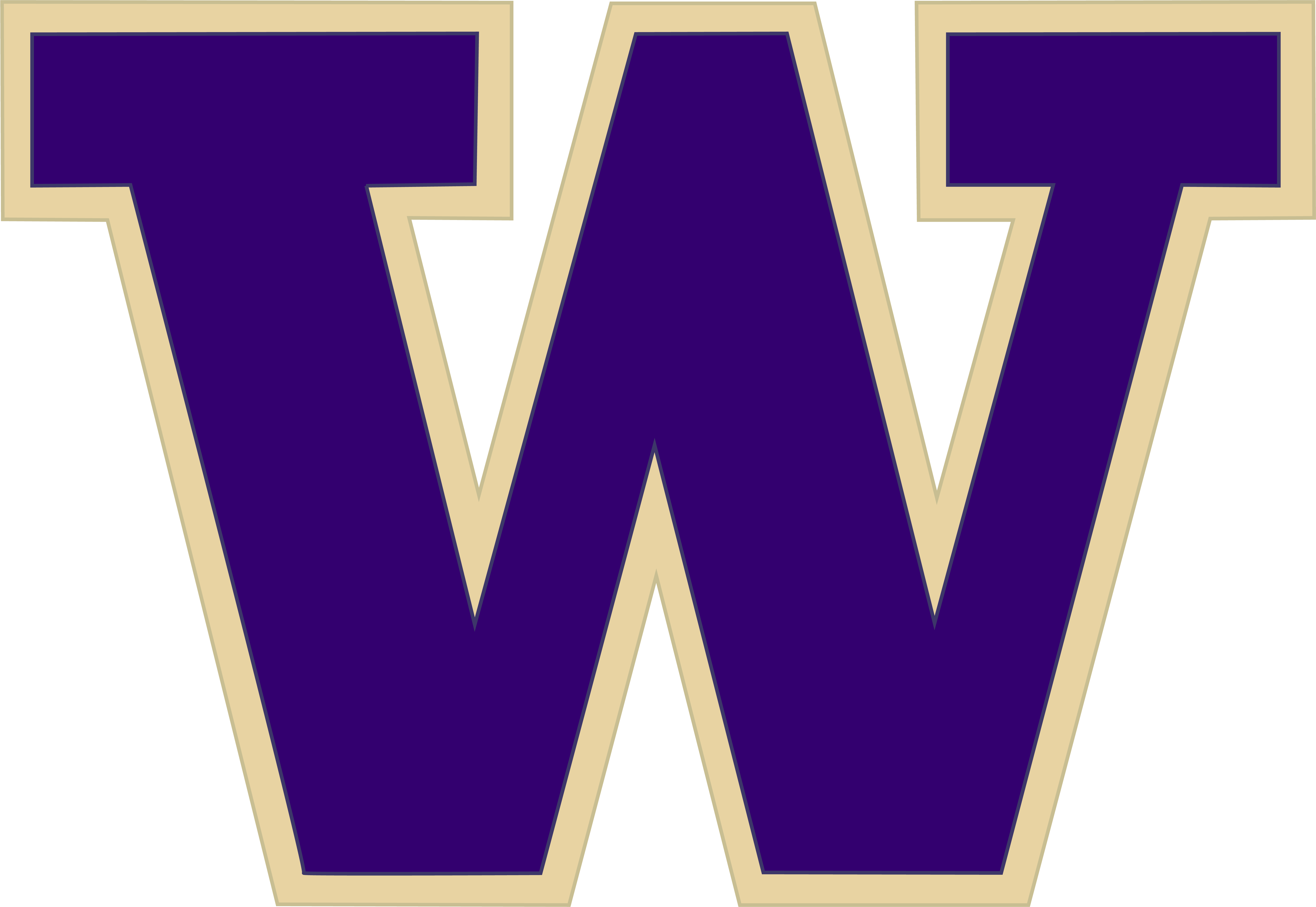APOLLO's Run Highlights
APOLLO runs are at present scheduled in consolidated chunks, so that members of the collaboration can be present at the observatory for the run. Ultimately, APOLLO telescope time will be scheduled in short (1 hour or less) blocks throughout the month for optimal sampling of the lunar orbit. The highlights below pertain to the once-monthly, few-day visits to the observatory. Each time, we set new records and become more efficient at getting outstanding laser returns from the moon.
APOLLO started getting "sky time" in July 2005—a combination of engineering time and director's discretionary time. Snippets of time in July, August, and September allowed us to hone our technique and develop the software resources we needed to be successful on our first "real" run in October, when we first installed the signal-boosting microlens array. The run summary picks up here.
October, 2005
- first APOLLO ranges; see detailed account
- successful ranges on three successive nights
- peak rate: 0.3 photons per pulse
- best run: 677 photons in 5000-shot (4 minute) run
- ranges comparable to JPL model within 0.1 ns (1.5 cm one-way)
November, 2005
- successful ranges on the last night (2-hour block) of run
- 1500 photons in roughly one hour span
December, 2005
- Successful ranges on two successive nights
- peak rate > 0.6 photons per pulse
- best run: 2150 photons in 12.5 minutes, pictured below
- total net on 12/08/05: 3700 photons
- in best run, 3 shots with 7-photon detections (and 7 shots with 6 photons, 10 with 5, 40 with 4, 77 with 3, 272 with 2)
- half of the 2150 return photons in the best run were bundled in multi-photon detection events (the APD array is vital!)
- on the last night, acquired unambiguous signal in poor seeing within 10 seconds of start (and only 5 minutes into scheduled time)

Example run from December, 2005. The lunar return signal is strikingly strong amidst the noise. The bursty nature is due in part to manipulations of pointing as we try to optimize the signal—sometimes we steer completely off of it for a bit.
January, 2006
- only 2 out of the 12 scheduled hours were useful for ranging (weather)
- harvested 7000 photons in this brief period
- peak rate > 0.6 photons per pulse (and seeing not great, at > 1.5 arcsec)
- best run: > 2500 photons in 10000-shot (8 minute) block, hands-free
- recorded one event with 8 photons in return pulse
- building confidence in acquisition technique
February, 2006
- mostly weathered out, plus some software growing pains
- the short time we did get on the telescope had horrible seeing (3 arcsec), and thus no acquisition
March, 2006
- both nights 100% clouded out, but substantial improvements to overall capabilities were realized (closer to remote operability, interleaved fiducial measurements)
April, 2006
- engineering effort resulted in stabilized clock
- much consternation over bad weather, but successful acquisition on two nights
- having stabilized the clock, achieved interleaved fiducials (returns from internal corner cube), and conducting periodic calibrations of the TDC, this run represents the first science-quality data from APOLLO. Prior data was good at the 1–2 centimeter level (not bad!), but we now should be able to deliver millimeter-quality data.
May, 2006
- Let's not talk about May
- So far in 2006, we've been able to use 7.2 hours of 57 scheduled because of weather. Less than six of these hours had decent seeing conditions.
- Nonetheless, we failed to acquire on a couple of decent nights in May.
- Enough about May
June, 2006
- A key breakthrough in understanding an anomalous 2 arcsecond beam offset puts us on the path to efficient acquisition
- Found Apollo 15 quickly even in shadow (a first)
- Acquired Apollo 11 from Apollo 15 in less than a minute
- Saw a peak sustained photon rate of 0.2 photons per pulse on Apollo 11!
- Acquired Apollo 14 from Apollo 11 in less than two minutes (in dark)
- Good signal on all three Apollo reflectors within 15 minute period
- In second June run, verified our handle on acquisition (first night found in ten seconds!)
- Established practical seeing limit at 2.0–2.5 arcseconds—beyond which acquisition is not assured. Luckily the seeing is rarely this bad.
- Operated from the control room: we are finally able to run the system "remotely," opening the door for operations from our home institutions.
- Expanded beam to cover primary mirror more fully
- Installed notch filter in our CCD, allowing us to watch the target while ranging
Let the campaign begin...
Starting in the Fall of 2006, APOLLO time is scheduled to occur more frequently as we begin the science campaign in earnest.
Status updates now appear in tabular format for each lunar month.
A running summary of APOLLO milestones appears below:
- As many as 9 photons in a single pulse
- Peak rate of about 0.8 photons per pulse (over several seconds)
- Sustained rate of about 0.35 photons per pulse (over several minutes)
- All four reflectors in a one-hour period (2650 photons total)










